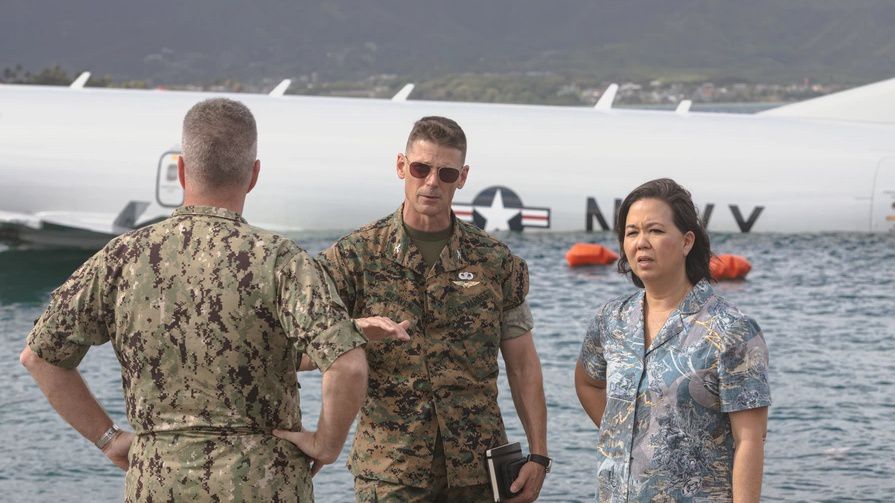HONOLULU — U.S. Navy officials held a press conference Monday discussing how they plan to remove a plane from Kaneohe Bay after it overshot the runway last week. The first step in the process occurred Sunday, when Navy divers removed about 2,000 gallons of fuel from the P-8A aircraft.
Col. Jeremy Beaven, the commanding officer at Marine Corps Base Hawaii, said within 30 minutes after the P-8A aircraft entered the water, the Navy had completely deployed a “containment boom.” He described it as a floating barrier meant to contain any hazardous contaminants that leak from the plane.
In subsequent days, the military added two more containment booms and absorbance to the inside layers of the boom. They also anchored the aircraft to ensure it wouldn't move and cause further damage to the reef.
According to Rear Admiral Kevin Lennox, the booms are precautionary and as of Monday no fuel has leaked out of the plane.
“The aircraft is in remarkably good condition and has full integrity,” said Lennox.
On Sunday, the Navy dive team removed fuel from the P-8A aircraft at Kaneohe Bay. Lennox said it was the first time that a P-8A was defueled under water. Before defueling began, Navy divers practiced at Pearl Harbor by disconnecting and connecting fuel lines on a P-8A aircraft.
“We estimate that the aircraft had just over 2,000 gallons of fuel on board and the team extracted all the fuel that they could get out of those tanks,” said Lennox. “This process was completed successfully without any fuel being released into the bay.”
The Navy dive team also conducted a hydrographic survey to assess the coral and marine environment around the aircraft, according to Lennox.
“The survey is helping the Navy to plan a recovery operation that minimizes impact to the critical ecosystem here in Kaneohe Bay,” said Lennox.
Lennox said the Navy, in partnership with the Department of Defense and private industry experts, is now working to create a plan for the next stage of salvage. He said the Navy hopes to remove the plane without causing further damage to the environment, while preserving the capability of the aircraft.
According to Lennox, there are two ways to remove the plane. The first would involve floating it within range of a crane, which would be on the Kaneohe Marine Corps Base’s runway. He said officials are determining whether the site can support the heavy equipment required to lift the plane out of the water and onto the runway.
The second option would be to move the plane onto “roller bags,” which are cylinder-shaped floating devices. The plane would be rolled on top of the bags and onto the runway. The Navy expects to receive the roller bags Wednesday, which are being shipped from Louisiana.
Lennox said the Navy will conduct two investigations into the plane crash. The first investigation will be about safety and will remain confidential. The second will be a legal investigation. The Navy does not have a timeline on when they will complete the investigations.
Currently, the P-8A aircraft is sitting on the coral reef and sand, according to Cmdr. Mark Anderson, a Navy diver, who is the commanding officer of the salvage team. He said the left engine and the front landing gear are resting on the coral reef.
Anderson described the damage to the reef as “minor” and said the Navy would do further assessments after removing the aircraft.
“There [are] no massive chunks missing. There is nothing that is of great concern right now,” said Anderson.
During the news conference, Lennox responded to a question about Hawaii resident’s distrust of the U.S. Navy following the Red Hill fuel leaks.
“My goal is to be open and transparent in everything we do here,” said Lennox.
Michelle Broder Van Dyke covers the Hawaiian Islands for Spectrum News Hawaii. Email her at michelle.brodervandyke@charter.com.



